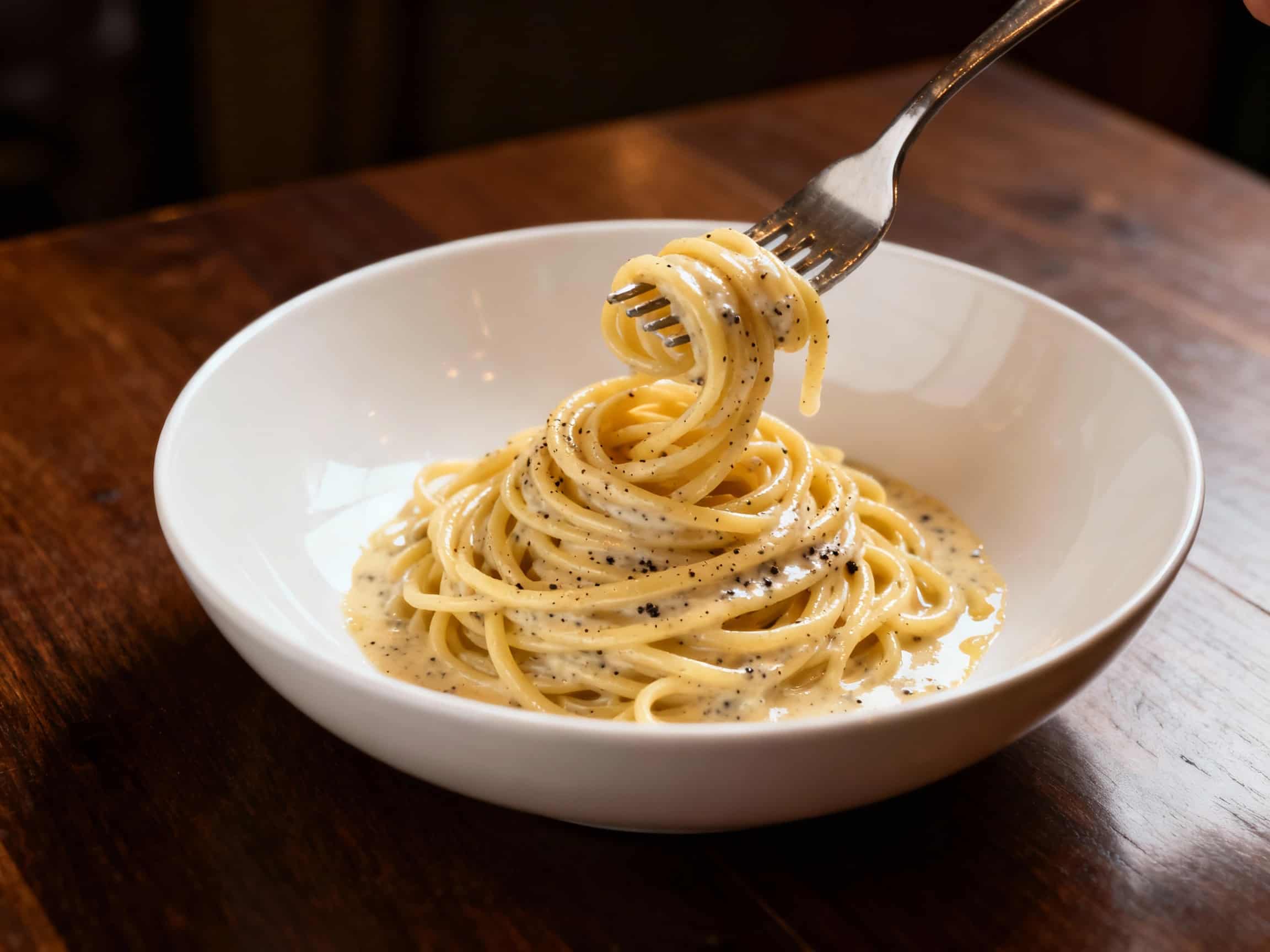
Cacio e Pepe
Cacio e Pepe
- Country
- Italy
- Region
- Lazio
- Recipes
- 3 Recipes
Dish information
Cacio e Pepe, meaning 'cheese and pepper,' is one of the most iconic and deceptively simple Roman pasta dishes, epitomizing the honest flavors and culinary philosophy of Lazio. Its minimalist nature belies a sophisticated technique that transforms just three basic ingredients—Pecorino Romano cheese, black pepper, and pasta—into a rich, emulsified sauce. The dish's origins are deeply rooted in the history of Roman shepherds, who would carry these easily transportable and non-perishable ingredients during their transhumance (seasonal migration of livestock). The hard Pecorino Romano cheese provided energy, pepper stimulated warmth in cold conditions, and dried pasta was a filling staple. The technique of creating a creamy sauce without cream, relying on the starch from the pasta water to emulsify with the melted cheese and ground pepper, is a testament to centuries of culinary wisdom. While its exact inception as a named dish is not explicitly recorded, Cacio e Pepe has been a working-class staple for centuries, gaining widespread fame in Rome during the mid-20th century and exploding in popularity globally in the 21st century. Chefs like Anthony Bourdain popularized the dish, showcasing its elegance and historical significance. Its allure lies in its perfect balance of sharpness from the Pecorino, spice from the pepper, and the comforting texture of al dente pasta, a true masterpiece of Roman cucina povera.
Timeline
Pecorino cheese, a key ingredient, has Roman origins, used by shepherds.
Black pepper, introduced via spice routes, becomes a common ingredient in Italian cuisine.
Early forms of Cacio e Pepe made by Roman shepherds with basic ingredients.
Dish becomes a widely recognized staple in Roman trattorias and households.
Cacio e Pepe experiences a global resurgence in popularity among chefs and food enthusiasts.


